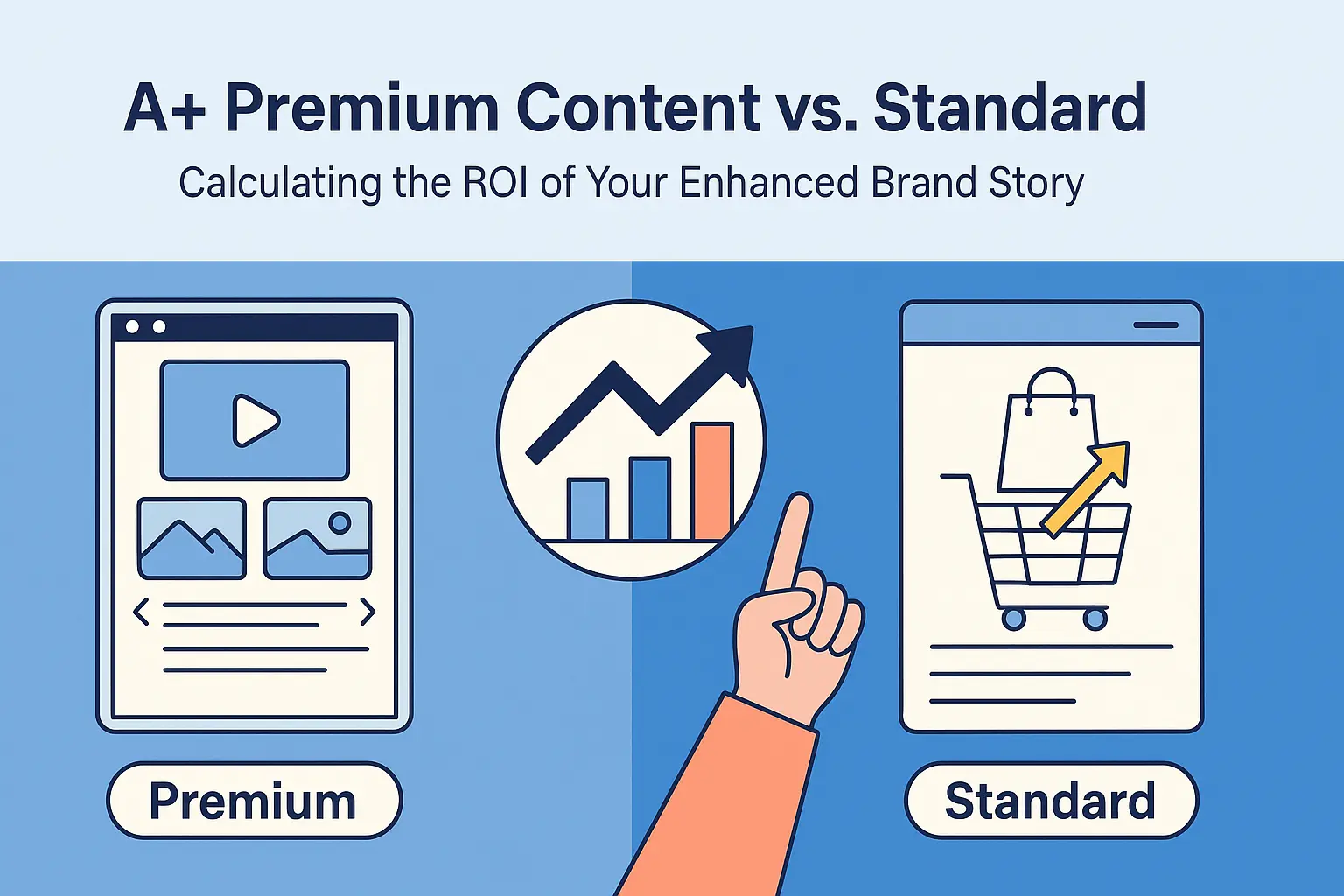- Perfality
- October 8, 2025
- 11:00 am
- Read Time: 5 mintues
If you sell on Amazon, you’ve probably heard about Premium A+ Content. Some sellers swear by it, saying it doubled their conversions. Others stick with standard A+ and argue the difference isn’t worth the cost. The truth lies somewhere in between—and the only way to know if it’s right for your brand is to look at the return it brings, not just the features it adds.
At Perfality, we’ve seen both outcomes. For some brands, Premium paid for itself in a few months. For others, the same money was better spent on ads or refining their Brand Store Design. The key is figuring out where it fits into your bigger growth strategy.
What Premium A+ actually adds
Standard A+ gives you modules, comparison charts, and image-heavy layouts that already look better than a plain text description. Premium A+ Content, on the other hand, opens up space for video, interactive carousels, and more immersive visuals—especially on mobile.
For shoppers, that means pages that feel like mini brand websites instead of product listings. For sellers, it can mean:
- Higher conversion rates on high-value SKUs.
- Fewer returns because customers understand the product better before buying.
- Stronger brand recall when content looks consistent across your catalog.
But here’s the catch: the cost is higher. So the decision really comes down to Content ROI.
H2Measuring if it’s worth it
The most important question isn’t “Does it look good?” but “Does it sell more?” That’s where Content ROI comes in. To measure it, brands usually track things like:
- Conversions before and after upgrading content.
- Engagement time—are shoppers clicking, watching, or scrolling more?
- Return rate changes—does better content reduce buyer confusion?
- Halo effect—does upgrading a hero product boost related ASINs or even the overall Brand Store Design?
We often run simple before-and-after tests for Perfality clients. One client selling appliances saw a 14% lift in conversions after switching two bestsellers to Premium. Another selling commodity accessories saw almost no difference, so we advised sticking with standard A+.
When Premium makes sense
Premium A+ isn’t always the right move. It’s strongest in categories where shoppers need reassurance or education—electronics, fashion, beauty, furniture. For items with little differentiation (say, generic cables or simple kitchen tools), standard A+ is usually enough.
Think of Premium as a tool for products that carry your brand identity or need more storytelling. It works best when paired with a strong Brand Store Design, so shoppers see a seamless brand experience from product page to storefront.
How Perfality helps brands decide
Instead of treating Premium A+ like a blanket upgrade, we help clients run the numbers. Our team audits existing listings, reviews performance, and builds tests that show whether Premium is earning its keep. If it makes sense, we design the A+ modules and adjust the Brand Store Design so the whole brand story connects. And if it doesn’t make sense? We steer you away from it and toward investments with better Content ROI.
Final thought
Standard A+ is already a big step up from plain listings. Premium A+ Content isn’t about making pages “pretty”—it’s about whether those extra features actually pay off. For some brands, it’s a growth engine. For others, it’s just extra spend.






